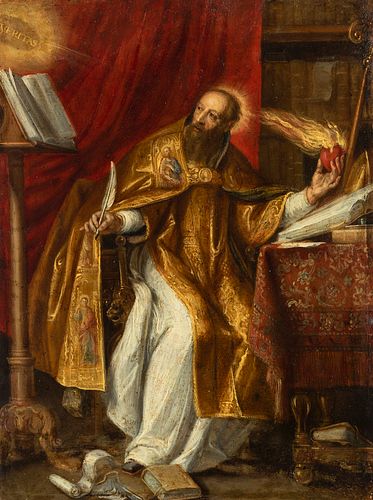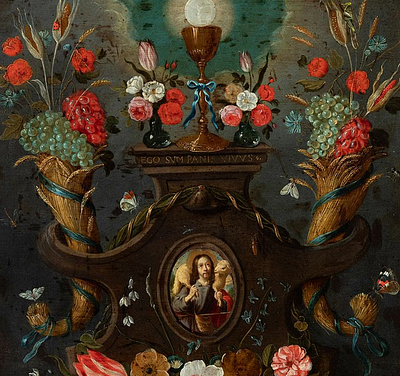Flemish school; second half of the 17th century. "Saint Augustine of Hippo". Oil on copper.
Lot 55
About Seller
Setdart Auction House
Carrer Aragó 346
Barcelona
Spain
Setdart Subastas was born in 2004 and is currently the first online art auction in Spain with solidity, prestige and reliability guaranteed by our more than 60,000 users. Setdart has a young, dynamic and enterprising team ready to successfully manage the purchase and sale of art works through custom...Read more
Estimate:
EUR€2,000 - EUR€2,500
$2,083.33 - $2,604.17
Absentee vs Live bid
Two ways to bid:
- Leave a max absentee bid and the platform will bid on your behalf up to your maximum bid during the live auction.
- Bid live during the auction and your bids will be submitted real-time to the auctioneer.
Bid Increments
| Price | Bid Increment |
|---|---|
| EUR€0 | EUR€10 |
| EUR€200 | EUR€25 |
| EUR€500 | EUR€50 |
| EUR€1,000 | EUR€100 |
| EUR€3,000 | EUR€200 |
| EUR€5,000 | EUR€500 |
| EUR€10,000 | EUR€1,000 |
| EUR€20,000 | EUR€2,000 |
| EUR€50,000 | EUR€5,000 |
About Auction
By Setdart Auction House
Sep 21, 2021
Set Reminder
2021-09-21 10:00:00
2021-09-21 10:00:00
America/New_York
Bidsquare
Bidsquare : 21st September - ARAS JÁUREGUI Private Collection - Old Masters, 19th & 20th Century
https://www.bidsquare.com/auctions/setdart-auction-house/21st-september---aras-j-uregui-private-collection---old-masters-19th-20th-century-7429
Setdart Auction House sofia@setdart.com
Setdart Auction House sofia@setdart.com
- Lot Description
Flemish school; second half of the 17th century. "Saint Augustine of Hippo". Oil on copper. Measurements: 28,5 x 21 cm. The painter offers us the figure of a holy bishop seated in front of his lectern or desk, dedicated to his intellectual work. The painter has represented the figure facing the spectator, although the character appears abstracted, due to the fact that he turns his face towards the lectern where there is an open book, without looking at or establishing any type of relationship with the spectator. He wears a large rain cloak, although it should be noted that, despite being common in depictions of this saint, in this case he does not wear the mitre on his head, but rather it is on the table, a feature that allows us to identify him as a bishop, although the mitre is covered by several books. Both his status as a bishop and his writing practice suggest that he is one of the fathers of the Church, perhaps Saint Augustine of Hippo. The figure of the saint is framed in an interior full of details, including a large red curtain and the presence of the flaming heart that the saint holds in his left hand. The artist has taken great care to capture the psychological and physiognomic features of the figure, working the face with great skill. He is also interested in the depiction of the liturgical vestments, and has drawn in remarkable detail the gold brocade and velvet fabric, with a classic thistle design, of the pluvial cloak. St. Augustine of Hippo (Tagaste, 254, Hippo Reggius, 430) was a doctor of the Catholic Church, known, among other things, for his writings, and for a legend: it is said that the saint was walking along the seashore, thinking about the Trinity; he came across a beautiful child playing. When the saint asks the little boy, he replies that he was taking the water out of the sea to put it into the hole, to which Augustine replies that it is impossible. The child replies that it is more difficult for him to understand the Mystery of the Holy Trinity, revealing himself with this phrase as Jesus.
- Shipping Info
-
In-house shipping available. Please inquire at admin@setdart.com.
-
- Buyer's Premium



 EUR
EUR CAD
CAD AUD
AUD GBP
GBP MXN
MXN HKD
HKD CNY
CNY MYR
MYR SEK
SEK SGD
SGD CHF
CHF THB
THB









